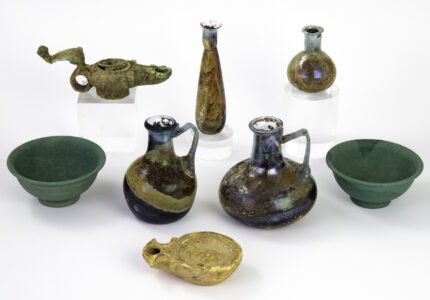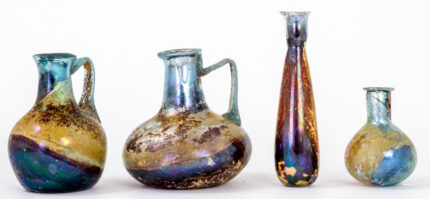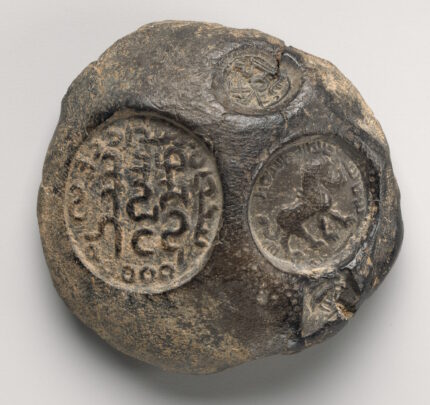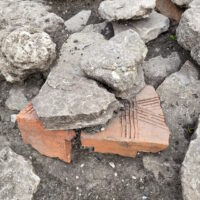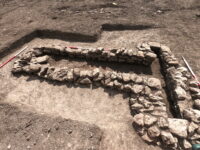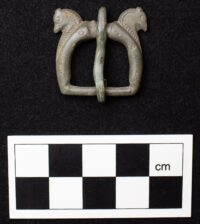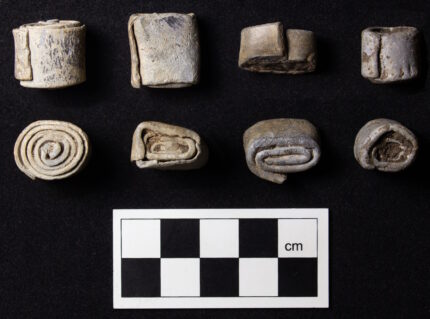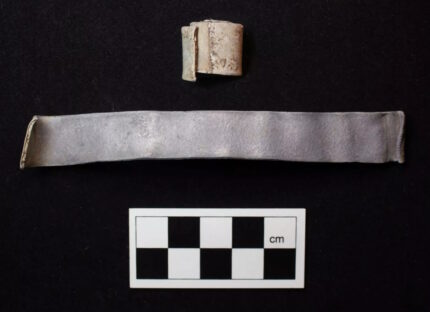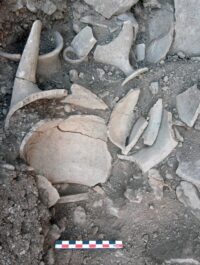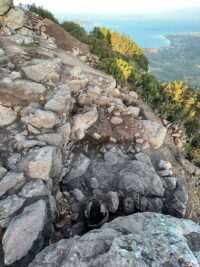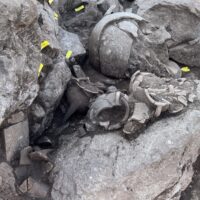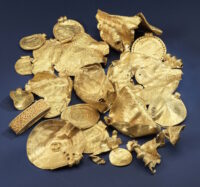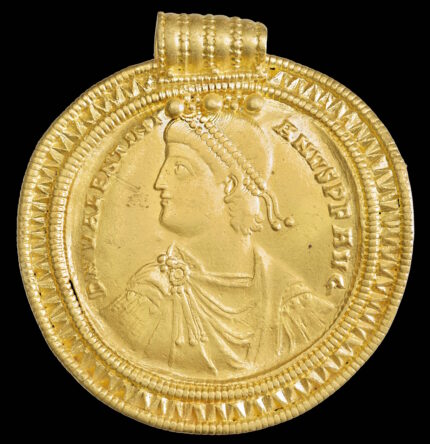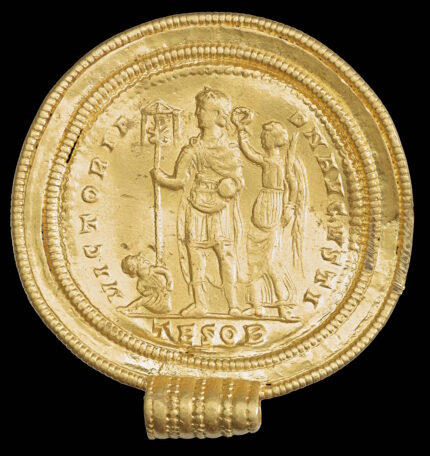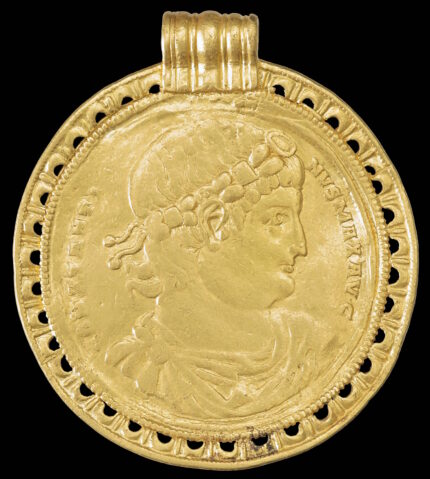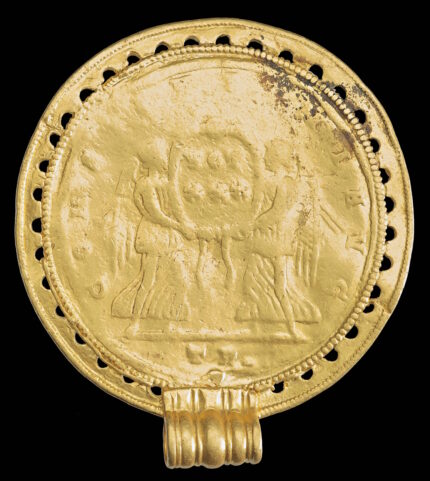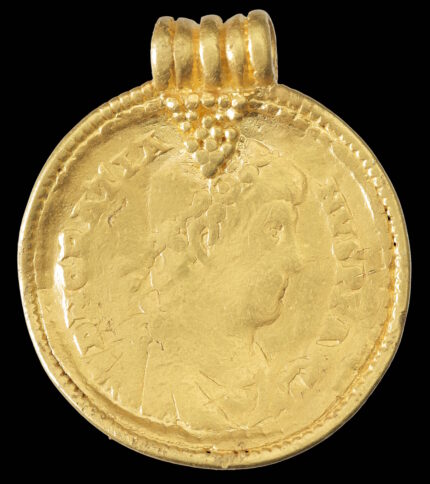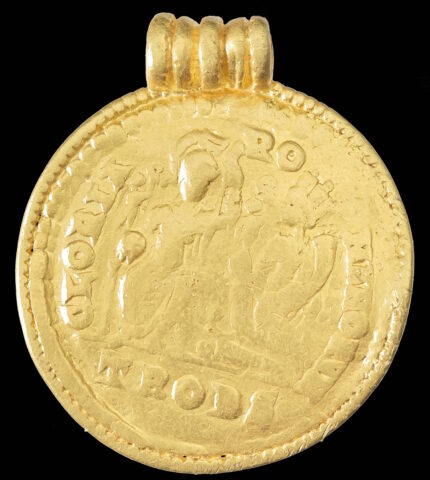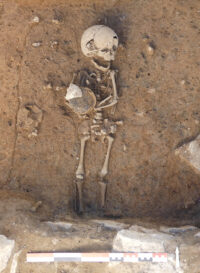 A preventative archaeology excavation on the Rue de Beaucaire in Nîmes has uncovered graves, cremation pyres and secondary burials ranging in date from the 2nd century B.C. to the 2nd century A.D. The current street follows the east/west axis of the Via Domitia, the first Roman road in Gaul linking France to Spain, and a second road running northeast/southwest was unearthed in the excavation. Burials had been discovered on both roads, a common practice in ancient Roman cities which forbade burials within city limits.
A preventative archaeology excavation on the Rue de Beaucaire in Nîmes has uncovered graves, cremation pyres and secondary burials ranging in date from the 2nd century B.C. to the 2nd century A.D. The current street follows the east/west axis of the Via Domitia, the first Roman road in Gaul linking France to Spain, and a second road running northeast/southwest was unearthed in the excavation. Burials had been discovered on both roads, a common practice in ancient Roman cities which forbade burials within city limits.
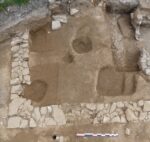
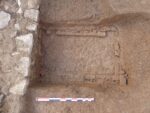 Several funerary enclosures containing up to 15 burials were found along the two roads. Most of them are cremation burials, with a few inhumation burials, including of a small child buried with a ceramic jug and lamp. There are several pyres, some built out of limestone rubble or terracotta tile stacks, others simply dug into the ground. The cinerary remains were not left where they were burned, but collected and buried in a grave either in the pyre area or in an adjacent annex.
Several funerary enclosures containing up to 15 burials were found along the two roads. Most of them are cremation burials, with a few inhumation burials, including of a small child buried with a ceramic jug and lamp. There are several pyres, some built out of limestone rubble or terracotta tile stacks, others simply dug into the ground. The cinerary remains were not left where they were burned, but collected and buried in a grave either in the pyre area or in an adjacent annex.
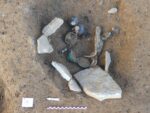 Grave goods were interred with the burned bones, including two pairs of strigils, glass vases, ceramics and lamps. The glassware and other grave goods are in excellent condition, many of them perfectly intact, and of fine quality.
Grave goods were interred with the burned bones, including two pairs of strigils, glass vases, ceramics and lamps. The glassware and other grave goods are in excellent condition, many of them perfectly intact, and of fine quality.
A well was also highlighted within one of the spaces. Its coping has been dismantled, only some debris remains, but its circular conduit remains dug into the rock. Today filled in and hidden under modern constructions, its excavation will perhaps make it possible to collect debris from the dismantling of the tombs and funerary monuments which surrounded it.
The National Institute of Preventative Archaeology (INRAP) is opening the excavation site to visitors this Saturday, April 13th, from 10AM-12:30PM and 2PM-5PM. Archaeologists will give guided tours of the finds, both the funerary enclosures and the remains of the newly-discovered Roman road.
